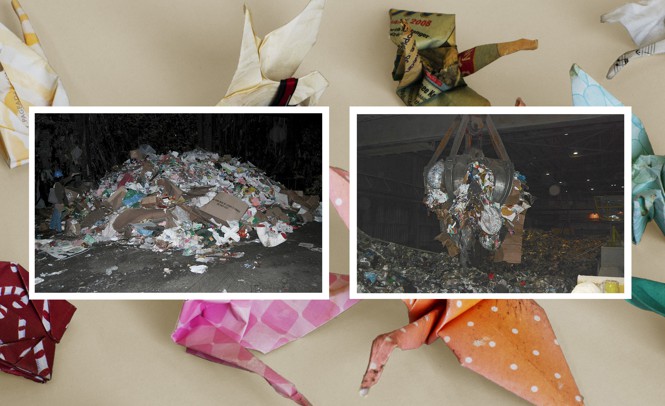



Missouri Senate candidate Eric Greitens is facing criticism and condemnation Monday after sharing a political ad urging supporters to go "RINO hunting."
Driving the news: In the 38-second video, the Missouri Republican talks about his past as a Navy Seal before saying he's going "RINO hunting" and cocking a shotgun. He then breaks into a home alongside a group of men wearing U.S. camouflage uniforms and other military-style gear.
What they're saying: Multiple politicians and officials reacted to the video.
Flashback: Greitens released a video ad during his 2016 campaign for governor in which he used an automatic Gatling gun.
.

 A new law restricting imports from China's western Xinjiang Province goes into effect on Tuesday, giving U.S. customs officials broad authority to stop goods linked to forced labor of the Uighur minority.
A new law restricting imports from China's western Xinjiang Province goes into effect on Tuesday, giving U.S. customs officials broad authority to stop goods linked to forced labor of the Uighur minority.
 Hundreds of flights were canceled nationwide and thousands were delayed over the weekend due to various factors, including staffing shortages and severe weather.
Hundreds of flights were canceled nationwide and thousands were delayed over the weekend due to various factors, including staffing shortages and severe weather.
Novaya Gazeta editor Dmitry Muratov will sell 23-carat gold medal in US on Monday, donating proceeds to charity
The editor of the Russian independent newspaper Novaya Gazeta is auctioning his Nobel peace prize medal, with the proceeds to go to helping children displaced by the war in Ukraine.
Dmitry Muratov led one of the last major independent media outlets critical of Vladimir Putin’s government after others either closed or had their websites blocked after the invasion of Ukraine. In March, Novaya Gazeta announced it was suspending operations for the duration of the war after it became a crime to report anything on the conflict that veered from the government line.
Continue reading...Photographs by Andres Gonzalez
In the halls of schools where students have learned about the archaeological remains of failed civilizations, they have unwittingly shed the wreckage of their own. The visual artist and author Andres Gonzalez spent six years dutifully photographing the debris of a society in a specific form of decline: the letters, cards, notes, mementos, keepsakes, toys, talismans, objects, and ephemera that accumulate following a school shooting. The artifacts pictured in the book American Origami, Gonzalez’s incredible collection of more than 700 such photographs and their stories, recount the process of our civilization coming undone—of us becoming people less sensitive, less noble, and more barbaric than we once were. Through scores of Gonzalez’s interviews, photographs, and ruminations, American Origami chronicles the rise of a dark cultural malignancy and recounts the way that it eventually defeated us, then visualizes the cost.
Gonzalez’s journey begins just as everything changed. When Eric Harris and Dylan Klebold attacked Columbine High School on April 20, 1999, they and their echt suburban faces became the pop-cultural manifestation of every anxiety the last millennium had about the one to come. They were resentful outcasts who blew their relatively mundane teenage misery out of proportion in journals, notebooks, and homemade videos, fantasizing, between hours spent on old-school first-person shooter games, that they would eventually pay their ordinary Colorado community back for the combined crimes of—in their view—laughing too much and being pious. That is to say, they were proto-posters, the first sons of the nihilistic, lethally irony-poisoned moral cesspool of the internet about to be born. The two believed that they would be famous, that they would inspire more killings, and that they would have followers; they were correct on every count.
In that sense, they were the progenitors of a sinister kind of meme, one traceable through Gonzalez’s astute curation. In the archives of the Littleton Museum, in Littleton, Colorado, Gonzalez photographed a perfectly preserved letter written by a young stranger to Cassie Bernall, a teenager murdered at Columbine. Klebold and Harris, who had certainly been hostile to the eager Christian piety among some of their peers, became subjects of legend almost immediately after the shooting, especially with respect to Bernall, who was (mistakenly, it now seems) said to have answered “Yes” when one of the shooters prompted her to answer whether she believed in God. The story of Bernall’s martyrdom temporarily arranged a frame of meaning around Columbine. “You were always such a strong Christian,” the letter’s author wrote. “It is nice to know that you are smiling down on us … I admire you also for keeping your faith and believing in God. That is so cool! Well, I guess I better go. See you in heaven!”
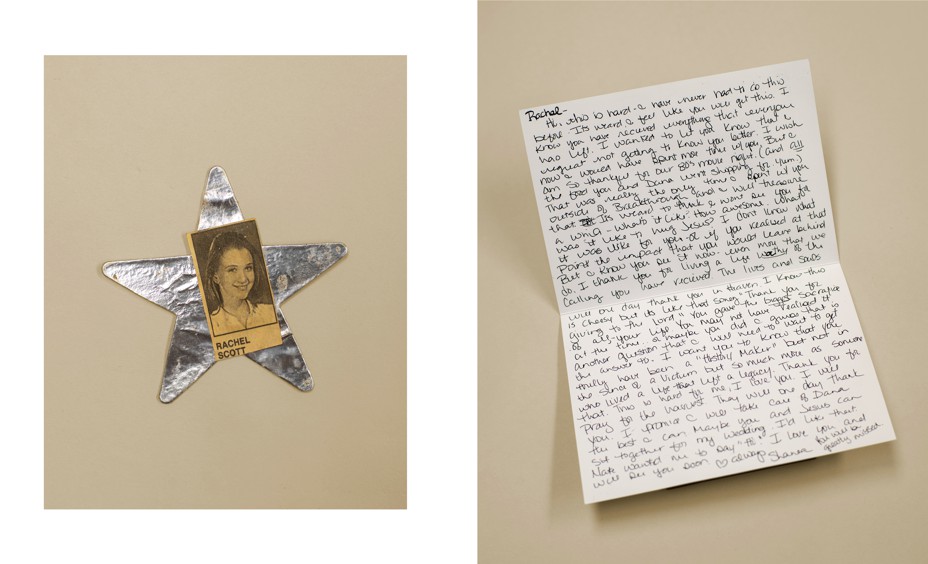
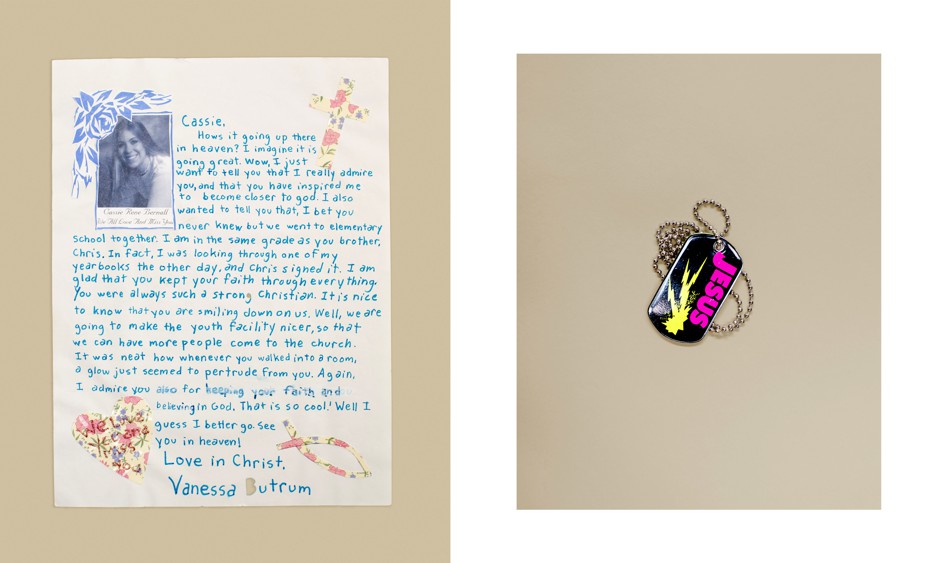
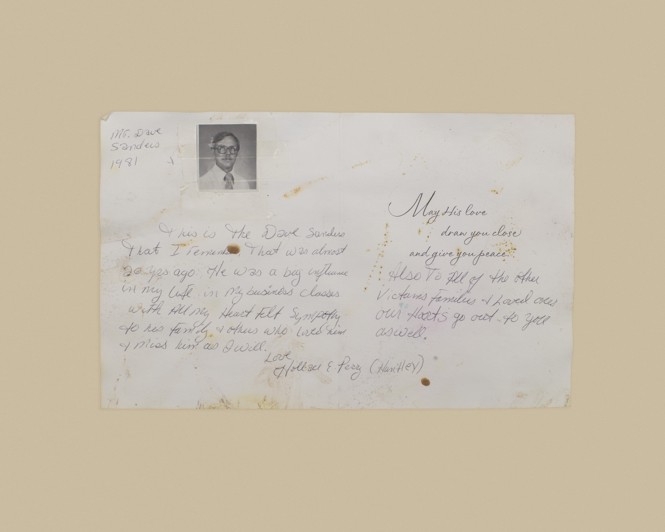
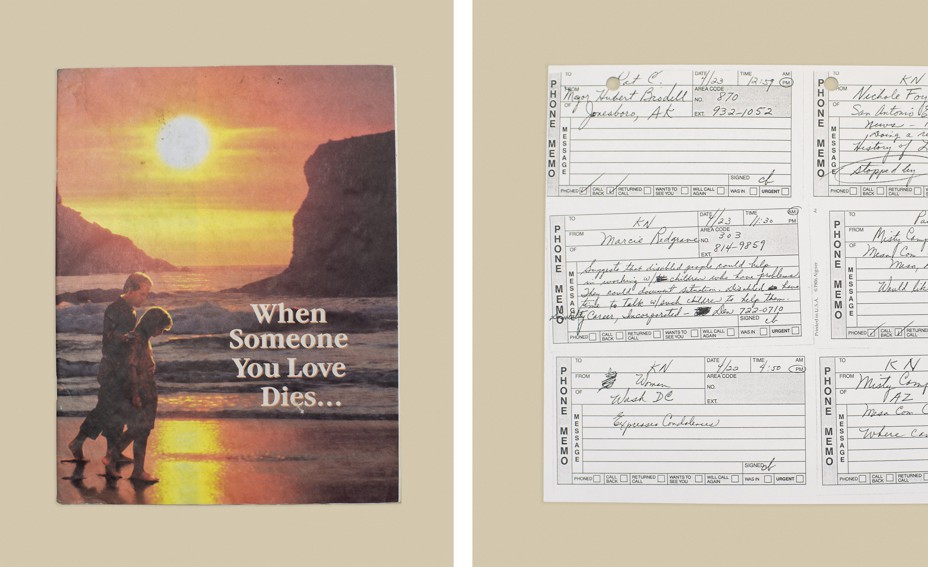

In March of 2005, Jeff Weise, a student at Red Lake Senior High School, in Red Lake, Minnesota, murdered nine people and injured many more during a shooting rampage that began at his grandfather’s home and ended at school, with his own suicide. The Red Lake killing spree was the most lethal school shooting since Columbine, something that Weise evidently knew all about. After the murders, investigators found that Weise had posted about Columbine in online forums, where he also routinely considered the merits of Nazism and the trouble with women; Weise had also described himself as a fan of the film Elephant in a pair of user profiles, referring to the director Gus Van Sant’s hyperrealistic 2003 riff on the Columbine massacre. Klebold and Harris got their movie and their fans: According to witnesses, Weise asked a student whether she believed in God in order to decide her fate, in keeping with Columbine’s memetic canon.
After Red Lake, the shock in Gonzalez’s collection of artifacts is more muted. People seem almost dazed. “Dear person,” a stranger wrote on a long strip of notepad paper decorated with floral borders. “Hello, I’m so very sorry that happened to you and your friends I don’t know much about it but I know it was bad. Happy Easter. I hope god will be with you & I wish for a better life for you and your friends (not that it’s bad), get well soon.” And another card, from Carol Larson, a victim injured on the scene, to Ryan Auginash, who helped her that day despite having been injured himself: “I replay that 10 minutes over and over and wonder why we weren’t afraid when we heard the first shots?” Perhaps it was just too early in history. Children these days would never make such a rookie mistake. Further on in Origami, you can see the X-ray of Auginash’s chest, which shows where the bullets pierced his body.


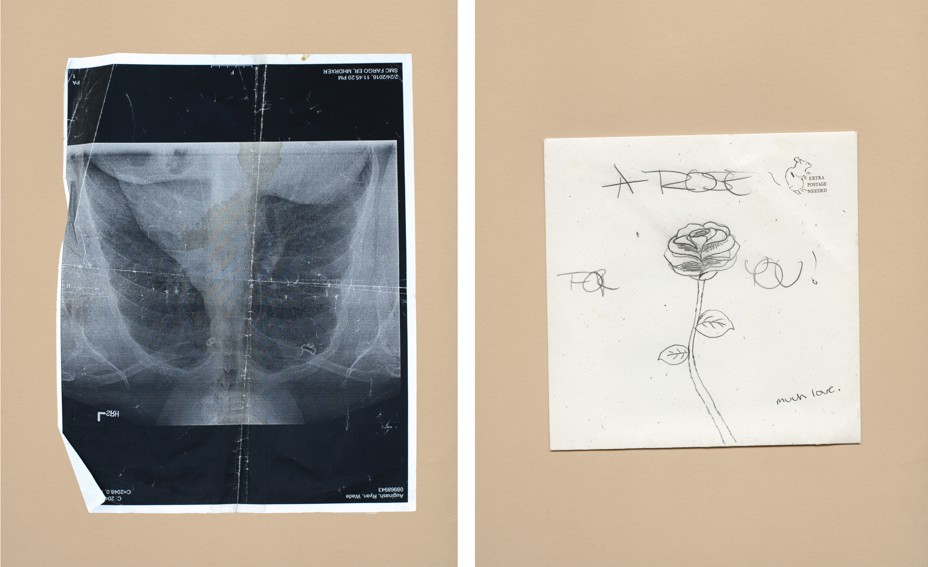

April of 2007 came. Virginia Tech. Seung-Hui Cho was captured by the meme that began in Columbine circa 1999 in much the same way as Weise had been, brought up on the same images and lore. Cho killed 32 people and injured more before shooting himself, just like his forebears. And, like Klebold, Harris, and Weise, he was an inveterate poster: Shortly before his killing spree, he sent a massive package of content to MSNBC, including a manifesto and tapes of himself, which have now themselves become iterations of the same old meme, almost an homage.
Meanwhile, the notes in Gonzalez’s collection continue to grow accustomed to the world to come. Gonzalez captured a poignant note from an elementary-school student who wrote to a Virginia Tech survivor offering sympathy because she, too, had lost a family member to violence. Another well-meaning sympathy card counsels survivors to think of things that smell good, like perfume, hot chocolate, cinnamon, and pie, or to contemplate the stars or beloved music, or to enjoy a piece of candy to get through the dark hours, in a portent of self-care culture on the rise. An entire universe of language, goods, services, and values would soon be born to equip individuals to self-soothe the kind of pain nobody should have to endure, and perhaps it’s no surprise that the domain of self-care has thrived in the age of decline.

There were other shootings between Virginia Tech and the shooting that actually ended school shootings as an object of policy and entered them, apparently forever, into the realm of civilization-destroying memes. Gonzalez’s camera finds its full strength trained on the material remains of Sandy Hook. This was America’s last stand, a direct confrontation between the society we have built and its toxic by-products. In a spiral of ever-deepening callousness, Sandy Hook introduced a moment in which Americans could still be shocked—and thus, perhaps still be motivated to act drastically to stop this cultural cancer from spreading any further.

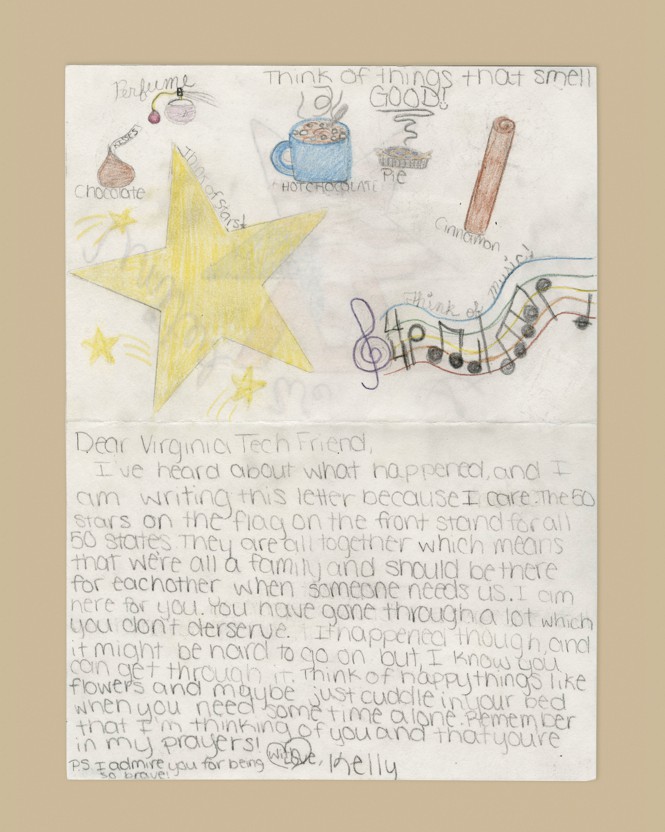

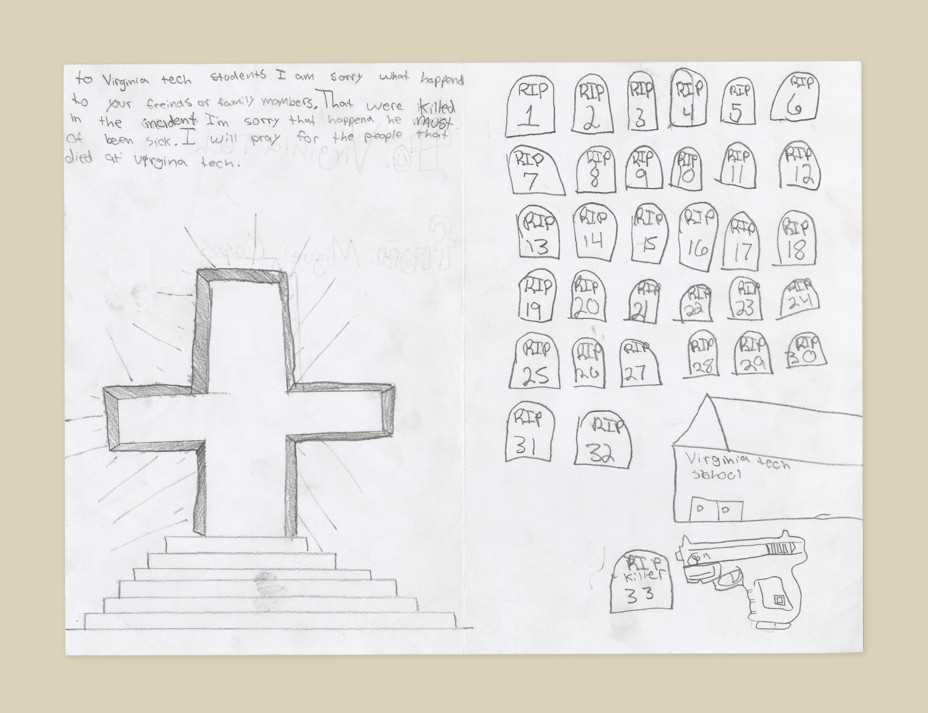

Adam Lanza, the Sandy Hook Elementary School shooter and a figure nearly unworthy of mention, was as true to the meme as a killer could be without rote imitation. A weedy, withdrawn individual whose behavior had concerned caregivers for years, Lanza was found, after murdering 20 children and seven adults, to have fostered a fawning obsession with Harris and Klebold, collecting documents and videos about the killers and posting about them online. Lanza’s list of grievances also included, unsurprisingly, the selfishness of women; age-of-consent laws; the fact that living in the world requires that we cooperate with other people, something he referred to as “cultural indoctrination.” He lustily cultivated every one of his dysfunctions on the internet, methodically planned his murders, and, less than two weeks before Christmas of 2012, took 20 children barely older than toddlers away from their families, with gifts already waiting under trees.
Lanza had, in one diabolical way, tweaked the form: Harris, Klebold, Weise, and Cho had all attacked their schools, and by extension, their peers. Their crimes were heinous, but the fact that they had (demented) personal disputes with their high-school and college classmates had given authorities a helpful line of defense: cracking down on bullying, and monitoring kids who seemed unstable. But Lanza’s attack was different. He seems to have had no particular reason to target Sandy Hook, other than his self-described hatred of humanity itself, and the brutal torture he could inflict on it by slaughtering 20 small children at random. To the formula arranged by Klebold and Harris, Lanza added an element of sadism and spectacle of the sort perfected by terrorists.

And we were terrorized. My God, the notes that people sent. Gonzalez pulls back to capture them in complex grids, tiled out side by side: Christmas cards repurposed as sympathy cards, sheets of stationery completely lined with script, one or two missives on Anne Geddes–style prints—perhaps not what one would want to receive under the circumstances, but maybe what one would like to send. Similar condolences poured in from strangers around the world. Per Gonzalez, Newtown, Connecticut, eventually received more than 65,000 stuffed animals and half a million letters, as well as a panoply of religious artifacts, tapes, quilts, artwork, and more. What else could we do?
Person to person, we comfort each other as we grieve. Democratically, and socially, we ought to be able to do more. And yet, in the 10 years since Lanza’s attack, American gun laws have barely changed at all. It wasn’t that no one tried. People tried valiantly—even the parents of the slaughtered children themselves. For their efforts to secure more stringent gun laws, they were demonized as liars and government agents by major online conspiracy peddlers like Alex Jones, who characterized the massacre as a hoax and the dead children as crisis actors. Jones’s position, which takes post-shooting reform efforts to be proof of a covert federal “false flag” operation to steal Americans’ firearms, is now such a standard right-wing response to mass murders that it was proffered as an explanation for the Uvalde, Texas, murders last month by online observers before the shooter’s name was even released. It serves as a neat discursive shield for the underlying school-shooting meme: If we pretend that none of these events is real or that they’re the cruel tricks of liberal authoritarians, then the underlying motives, behaviors, and capacities of the shooters don’t really matter. These men are just patsies, and we can’t trust investigators, anyway.


It’s hard to imagine an outcome Harris and Klebold would’ve been more thrilled with. As the weeks passed after Sandy Hook and the nation’s attention turned to other matters, the thousands of pounds of stuffed toys and letters and books and blankets were hauled out of Newtown in a tractor trailer and deposited in an airplane hangar. But the hangar, too, ran out of space for these symbols of grief and comfort, and eventually the city of Newtown agreed that the whole unwieldy mass of them should be taken to the city of Bridgeport and incinerated. In Gonzalez’s photographs, an industrial waste machine grabs clawfuls of rainbow-colored debris and drops them into a concrete pit. A fire begins, small at first. The fire spreads. It eventually spans two photographs, enveloping everything, reducing so many expressions of hope or pain to undifferentiated ash. The fire burns hot and long. It looks like hell.
